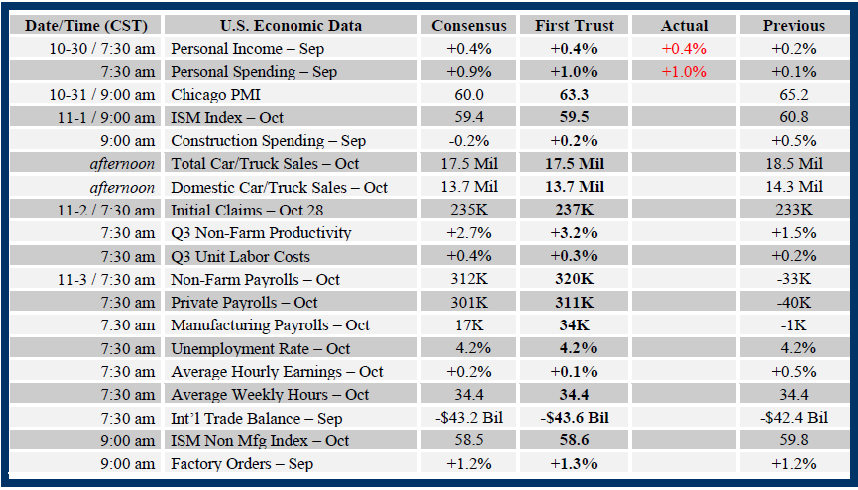Brian Wesbury Weekly Outlook
03.11.2017 13:59 - First Trust Global Portfolios Limited

“Continuity” At Fed, Not Best For Long-Term (30 October 2017)
The short-short list for new Fed Chair includes Janet Yellen, Fed Governor Jerome Powell and Stanford economist John Taylor, the author of the “Taylor Rule.”
Right now, Jerome Powell – a former Wall Street executive at Dillon Reed – is the runaway favorite. Taylor and Yellen are a very distant second and third.
The Trump Administration apparently wants to put its mark on the Fed, but at the same time insure “continuity.” After all, equities have been hitting record highs, jobs and growth are going well. Why rock the boat?
But maybe the Fed needs some boat rocking, like both Paul Volcker and Alan Greenspan did. Volcker stopped targeting interest rates and targeted money supply growth. Greenspan initially focused more on inflation believing that unemployment was minimized over time if inflation was low and stable.
In Greenspan’s later years at the helm, and then under Ben Bernanke and Janet Yellen, the Fed adopted a kitchen sink approach to monetary policy. The Fed worries about jobs, wages, equity prices, housing markets, long-term interest rates, and even inequality. Fed regulators are now so powerful, banks manage their businesses to respond to regulators, not markets.
The Panic of 2008, which was in part caused by Greenspan’s 1% interest rates, helped the Fed gather this new mandate to manage the economy.
Rather than accepting this broadened mandate, we think a new direction for the Fed might be best in the long-term.
The “Taylor Rule” would have avoided the inflation of the 1970s and helped avoid the 2000s housing bubble. His rule would have allowed the Fed to lower rates sharply in the 2008 Panic, but avoided the prolonged period of super low rates ever since.
His rule would help create a modest and humble Fed, rather than a super-powerful Washington entity who some say has little accountability to elected officials.
Many worry that Taylor would jack up rates right now, but the leader of the Fed has only one vote. A major change in Fed policy would take years of steady and patient leadership. By the time tides shifted, the “Taylor Rule” might signal even lower rates than current policy.
We don’t know who the President will pick. But we know the current path of Fed policy will not change overnight, regardless of the next Fed Chair. That’s fine for markets in the medium-term, but in the longer-term what’s best for the U.S. economy is not “continuity.”
